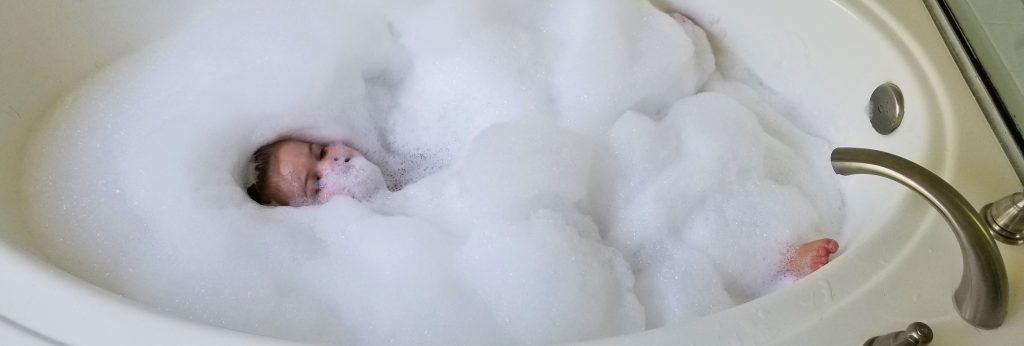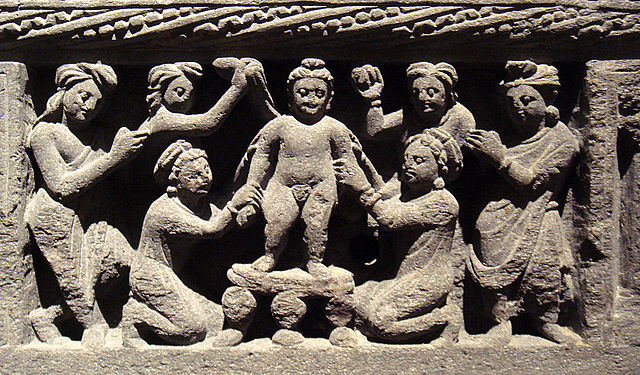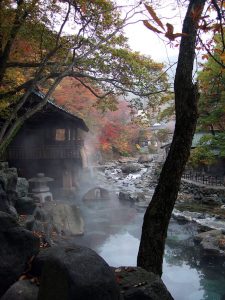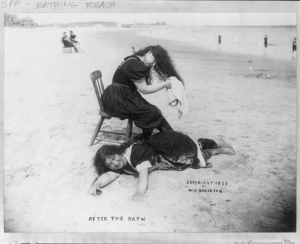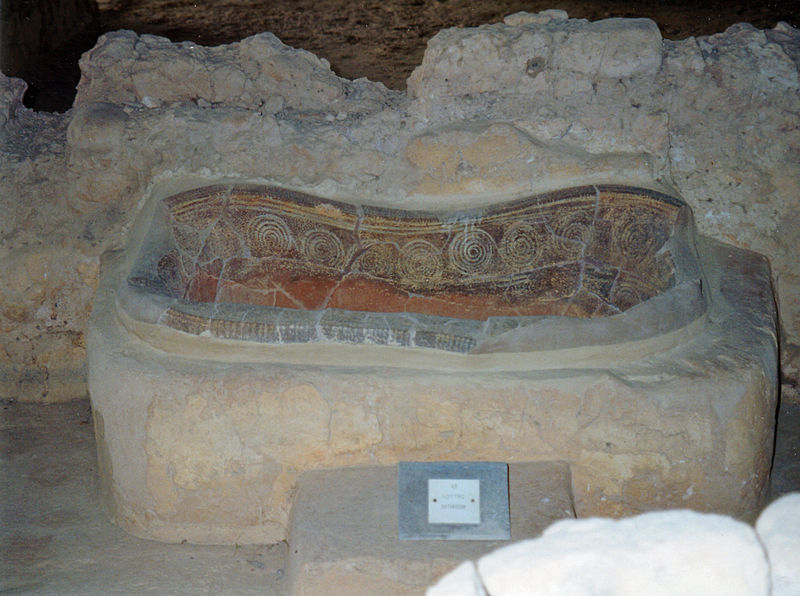

Balneological custom depends on when you live, where you live, how long you live, what you do for a living, and the seasons!
When You Live(d)

If you lived in ancient India, you likely engaged in elaborate practices for personal hygiene with three daily baths and washing. These are recorded in the grihya sutras, covering domestic rituals and are still in practice today in some communities.
If you lived in China during the Chou Dynasty, you likely bathed outside, weather permitting. However, if you lived in a Chinese city during the Song Dynasty, you were likely to wash your hands and face before eating and to visit a public bathhouse several times a week.
If you were a Buddhist monk in ancient Vietnam or Laos, you would have bathed frequently, sometimes daily, for religious reasons. However, if you were a Benedictine monk at Westminster Abbey, you would have been required to bathe only four times a year: on Easter, at the end of June, at the end of September, and on Christmas, according to monastic rules (though the Abbey employed a bath attendant year-round).

From the Manesse Codex, circa 1300
If you lived in Europe during the early part of the Middle Ages, you likely would have used a public bathhouse to spend quality time with your family, have a nice meal, meet your neighbors, and possibly even petition local officials. And if you lived during the 1340s-1350s and worried that open pores could allow illness to enter your body, you would likely have believed that dirt all over your skin would block disease. You would actually think bathing bad for your health because it opened pores, which led to sickness.
The Catholic Church has gone back and forth on bathing, sometimes linking physical and spiritual cleanliness and sometimes linking nudity and hellfire.
If you lived in Europe shortly after the Crusades, you are more likely to have engaged in a variation of the Turkish hammam and used soaps and perfumes brought back from Jerusalem.

Narrenbeschwörung (Appeal to Fools) by Thomas Murner, 1512
The ancient Irish bathed daily, sometimes multiple times a day. With the spread of Christianity in Ireland in the 5th and 6th centuries, societal norms shifted to match the current Church customs in Rome: bathing only a few times a year.
It wasn’t until the time of the American Civil War, and the acceptance of germ theory of disease, that bathing became associated with health in Western medicine.
In the early 1900’s, a typical Saturday night ritual involved American family members hauling loads of water into the kitchen, heating it, then filling a bath. Usually, the oldest/father of the family bathed first, followed by the mother, then the children in birth order, with the youngest last. Maybe this practice gave rise to “Don’t throw out the baby with the bath water.”
Where You Live

“Daily showering is a more cultural phenomenon than medical necessity,” Joshua Zeichner, MD, Mount Sinai Hospital.
If you believe YaHoo! Life, “Americans have long had a reputation for a “squeaky clean” devotion to hygiene that fuels a $3.1 billion body soap industry, yet recent studies show that Americans are actually quite average when compared to how often people shower worldwide.”
Among people who shower every day, Mexicans and Australians led, followed by Americans and the French. Brits, Russians, Swedes and Germans averaged less, with Chinese the least frequent.
If you live in an area where the geography lends itself to hot springs, geothermal vents, and readily available water and fuel for heating water, you are more likely to bathe frequently. Japan’s natural hot springs (onsen, more than 27,000 by some estimates) are used for nearly daily bathing, with some research indicating a link between frequent soaking and longevity. Dense forests provide fuel to heat Finnish saunas and Iroquois sweat lodges, both used for physical and mental health as well as bathing.

If you live in an area where water is scarce, you are likely to employ “dry” methods of bathing. Smoke baths, in which a blanket or tent is positioned above a fire of Commiphora wood to trap smoke around the bather’s skin, are effective means of killing bacteria and any bugs on the body or clothing. Oil or fat smeared on and scraped off the skin removes dirt and bacteria as well as protecting the skin from the elements. Pastes made with antibacterial herbs, clay, bark, and scented ingredients serve two purposes: they protect skin from sun, wind, or cold when applied and remove dirt when wiped off after drying.
If you live in an area crowded with other people, you are more likely to bathe frequently and often communally. Turkish hammam, Swiss health spas, Roman thermae, even medieval European bathhouses took advantage of shared resources (such as heat from baking ovens used to heat water) and were visited by groups of friends or neighbors. On the whole, bathing is less frequent in more sparsely populated areas.

From the Codex Magliabechiano
Societies with a tradition of communal bathing tend to view a visit to the bathhouse as necessary for social and mental health in addition to physical hygiene. Russian banyas and Turkish hammam are places for meeting neighbors. Swedish and Japanese onsen are used for mental health and relaxation as much as removing dirt from the skin. Taiwanese hot springs and Mexican temazcal serve medicinal roles and are often staffed by medical professionals. The Finnish House of Parliament has a sauna where elected representatives can discuss legislation and issues of the day.
How Long You Live
Children
Bathing recommendations from the Cleveland Clinic depend on your child’s age. Dr. Tamburro suggests these general guidelines:
- Babies, toddlers and little kids should spend some quality time in the tub two to three times per week. Their delicate skin doesn’t need daily cleansing, but it’s OK to get out the bath toys more often if your child gets dirty or has a messy diaper situation.
- Speaking of tub toys, make sure they’re non-toxic and don’t have the potential to harbor, mold, fungus, and bacteria.
- Older kids ages 6-11 should hit the bath two or three times per week, at a minimum. More showers are in order when they get muddy, sweaty or stinky.
- Tweens and teens should shower daily. (Their newly stinky pits will probably clue you in when it’s time to step up their hygiene game.) They should also wash their face twice a day. In addition, many teenagers are physically active, and showers are a good idea after strenuous sports events or practices, including swimming, working out, and other physical activities.
Older People/Seniors
- To avoid any skin conditions or infections, a senior should bathe at least once or twice a week.
- Some elderly people may suffer from dementia, and they may have more toilet mishaps. Obviously, this means more frequent baths and showers to avoid infections.
Adults in General
It may sound counterproductive, but a shower every day could be bad for your skin. Some dermatologists only recommend a shower every other day, or two to three times a week. If you shower too much it can lead to discomfort, and you may experience:
- Itching
- Dry, flaky skin
- Flare-ups of skin conditions like eczema and psoriasis
- Dry, brittle hair
Although fewer showers may improve skin health, you should still keep your personal hygiene in mind. If you go too long between showers you may experience
- Increased body odor
- Acne
- Flare-ups of skin conditions like eczema, psoriasis, and dermatitis
- Skin infections
- Areas of dark or discolored skin
- in extreme cases, dermatitis neglecta, thick patches of scaly skin
What You Do for a Living
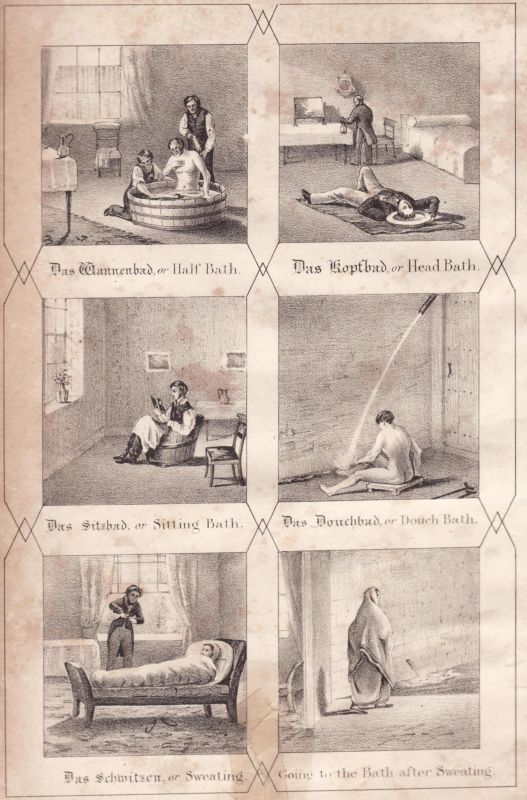
People who work at desk jobs and spend most of their time indoors have the same bathing needs as adults in general. However, those who work with dangerous substances, animals, or in any jobs that people consider to be unhygienic may feel the need to bathe more often.
- Janitor
- Exterminator
- Miner
- Garbage collector
- Butcher
- People who work with corrosive materials, dangerous chemicals, disease agents, and radioactive materials need to shower at the end of each of their shifts.
- Horticulturalists, arborists, amateur gardeners, and anyone who spends a significant amount of time outdoors around a variety of plants can reduce their risk of rashes and other skin injuries by showering as soon as they come indoors. on.
- Athletes—anyone—whose job requires intense physical exertion.
Seasons and Weather

by Kusakabe Kimbei
Guidance for better bathing during seasonal differences and changing weather are included in other categories and won’t be repeated here.
Health Line offers tips to bathe correctly and protect your skin.
- Only take one shower a day (every other day, if possible). On days that you don’t shower, give yourself a sponge bath. Wash your face, armpits, and groin with a washcloth.
- Don’t shower in hot water. Use warm water, instead.
- Limit showers to 5 to 10 minutes.
- Use a gentle soap or cleanser, and thoroughly rinse off soap before exiting the shower.
- Don’t rub your skin with a towel. Blot skin dry to retain moisture.
- Avoid cleansers and soaps with fragrances or deodorants. These products can irritate your skin.
- Apply moisturizer to your skin after each shower or bath
Related Matters
- Sweat doesn’t have an odor. It’s the interaction of sweat with bacteria on the skin that creates the stink.
- Even with “good” smells, too much is never a good thing, particularly in close quarters. For example, the Richmond Symphony and Chorus ban perfume, aftershave, deodorant, etc.
- According to the Cleveland Clinic, you probably don’t need to wash your hair every time you shower. Typically, shampooing two or three times a week will help keep your scalp healthy and hair happy.
- A Dutch study found that individuals who ended their showers with at least a 30-second blast of cold water were absent from work 29 percent less of the time than people who did not do so.

Lahore, Pakistan
Bottom Line: According to medicalnewstoday.com, “Although showering offers physical, mental, and emotional benefits, the daily shower that many people in the U.S. are in the habit of taking is probably more than most people need. Showering dries out the skin and hair, uses natural resources, and creates an additional source of water pollution.”
For a more detailed exploration of how social norms around bathing vary throughout history and around the world, check out Clean: A History of Personal Hygiene and Purity by Virginia Smith.
